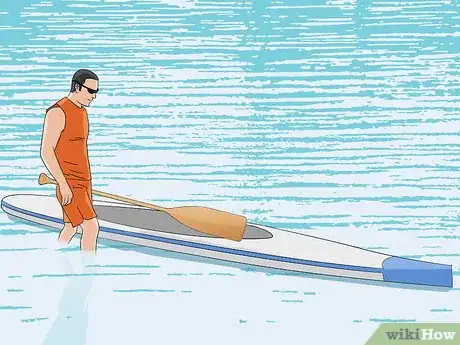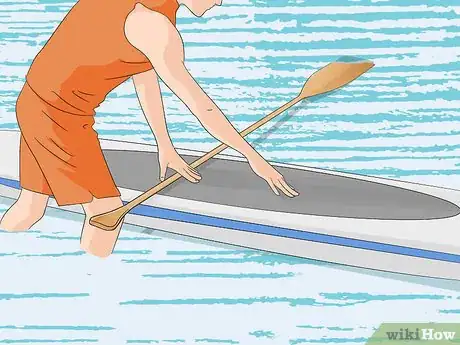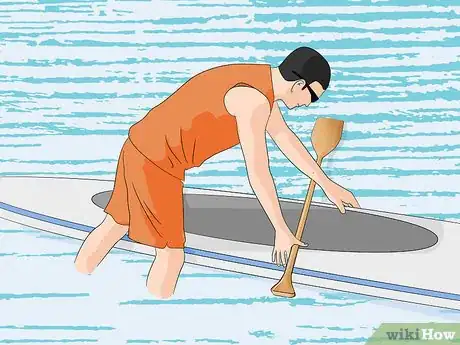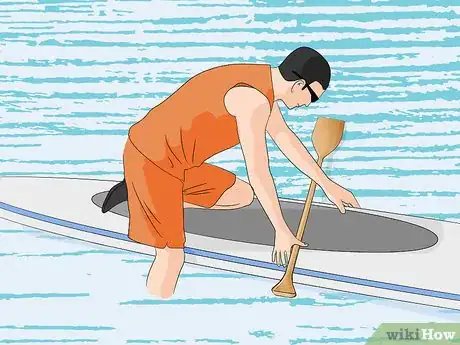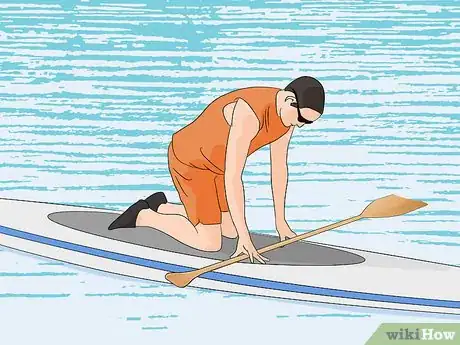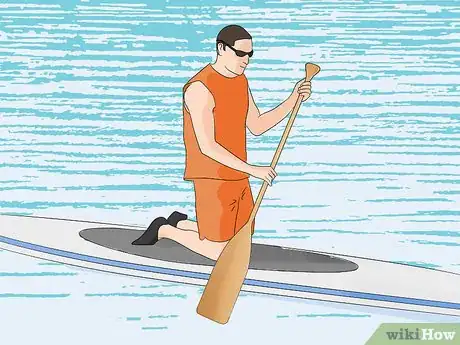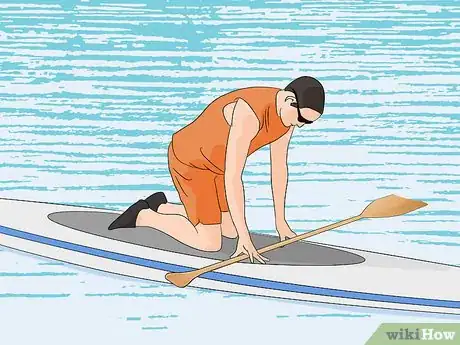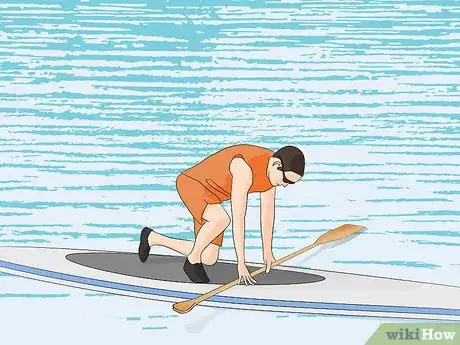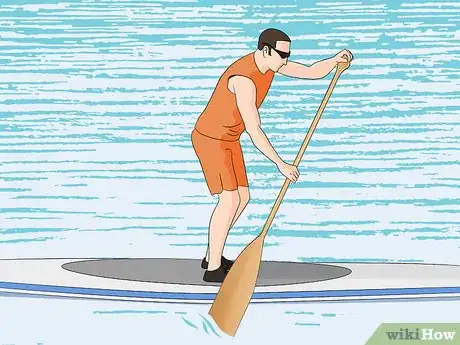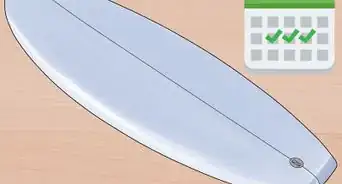X
wikiHow is a “wiki,” similar to Wikipedia, which means that many of our articles are co-written by multiple authors. To create this article, 13 people, some anonymous, worked to edit and improve it over time.
This article has been viewed 41,686 times.
Learn more...
Part surfing, part kayaking, and a terrific workout for all ages, stand up paddleboarding (SUP) is a great way to get out on the water without needing tons of equipment.
Steps
Part 1
Part 1 of 2:
Mounting the Board
-
1Wade out into shallow water and stand directly next to the board. You'll want to be about knee-deep in the water when you mount your board, and you should stand on whichever side of the board you feel most comfortable.[1]
- Make sure the board is placed so the fin is down in the water.
-
2Place your paddle horizontally across the board. The grip of the paddle should be aligned with one side of the board (the side closest to you) and the paddle is touching the water on the other side.[2]Advertisement
-
3Hold the board on its sides. The hand closest to your body will be gripping both the board and the paddle, which will help you maintain balance as you mount the board.
-
4Lift one knee out of the water, and pull the board toward you. This will allow you to place your knee on the "sweet spot," which is just about the mid-point of the board.
- If your board has a handle, the “sweet spot” will often be where the handle is integrated.
-
5Shift your weight so your body is directly above the paddleboard, and bring your other knee to rest on the traction pad. You should now be in a kneeling position, with both knees on the board, and feel relatively stable.[3]
-
6Consider taking a few strokes in the kneeling position so you can get a feel for the board.
- Check the board positioning as you do this: If the nose end comes out of the water, you're too far back on the board, and if the tail end comes out of the water, you're too far forward. Adjust your position as necessary so your board lies as flat as possible.
Advertisement
Part 2
Part 2 of 2:
Standing Up
-
1In the kneeling position, lean forward and place the paddle horizontally across the deck of the board. Grip the sides of the board with both hands.[4]
-
2Slowly stand one foot at a time, placing your feet on the sweet spot where your knees where. Continue gripping the board to help stabilize yourself.[5]
-
3Rise to a standing position, adjusting your feet as necessary. They should be hip-width apart, and you should feel relatively stable. Make sure to bend your knees slightly and keep your core centered over the board.
-
4Start paddling![6]
Advertisement
Community Q&A
-
QuestionIf I fall, how do I remount the board?
 Community AnswerMost folks climb on from the side. If that is too difficult, move to the tail and push the back end of the board under your body.
Community AnswerMost folks climb on from the side. If that is too difficult, move to the tail and push the back end of the board under your body.
Advertisement
Warnings
- As with any water sport, the use of a personal flotation device is strongly recommended.⧼thumbs_response⧽
Advertisement
References
- ↑ https://www.youtube.com/watch?v=9_7IdfrmbC8
- ↑ https://www.youtube.com/watch?v=9_7IdfrmbC8
- ↑ https://www.youtube.com/watch?v=xCpFF94HlaU
- ↑ https://www.youtube.com/watch?v=8RNPewqloNw
- ↑ https://www.youtube.com/watch?v=8RNPewqloNw
- ↑ https://www.youtube.com/watch?v=xCpFF94HlaU
- http://www.inside-york-maine-vacations.com/stand-up-paddleboard.html
About This Article
Advertisement
